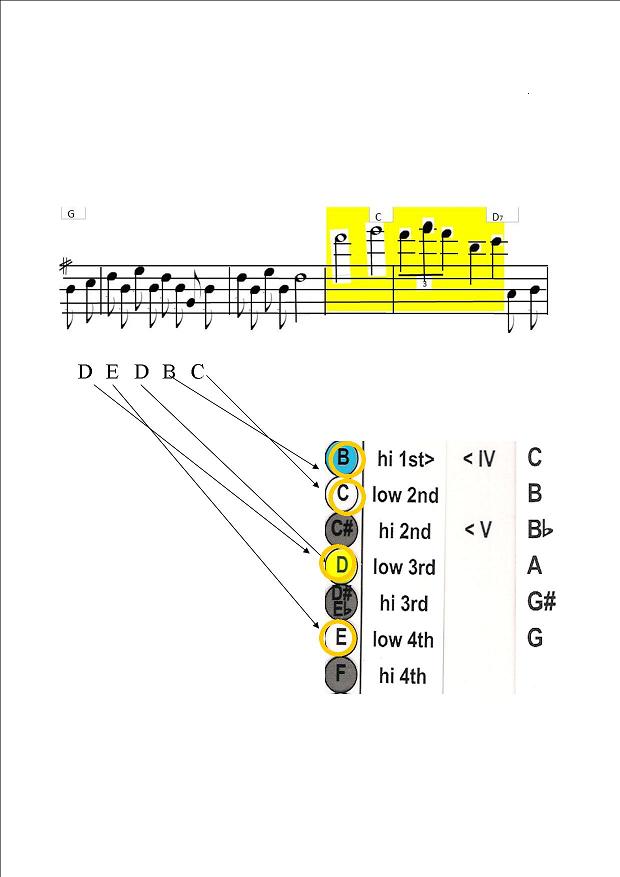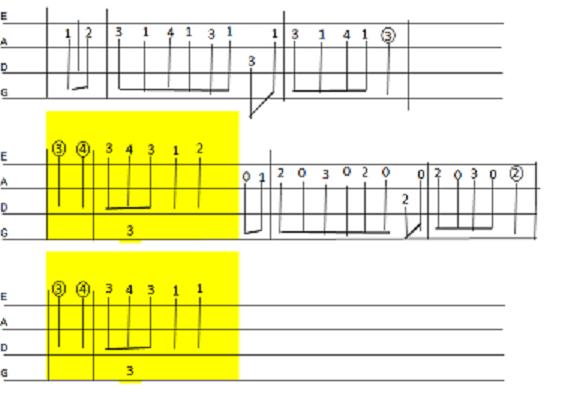Fiddlewidget
| Home | What's a Fiddlewidget? | Suppliers | Fiddlewidget University | Instruments |
Twinkle Little Star; a great little tune from Bobby Hicks' "Fiddle Patch" CD
The tune: This is the fourth cut, I think, on the Fiddle Patch album by Bobby Hicks. The whole album is great, and I particularly liked this tune. You can still order the album from Amazon and I found a sound file out on a myspace site where you can listen and/or buy the album if you wish.
Bobby Hicks is best known for his inventive use of double stops,such that
this has become the most recognizable element of his style. But he is also just a flat-out great fiddler, period.
The higher position lick we'll isolate on here doesn't use double stops in this particular passage, so we'll just have individual notes to
deal with.
The tune itself is a pretty straightforward fiddle tune format; an A and a B part, equal in length.
The higher position lick is in the third full measure of the B part, so we'll write out the first few measures of the B section in
musical notation:
 If you play this you can probably tell where the higher position part is, but it's highlighted in yellow
just to be sure. After that second yellow section, the rest of the tune is back down in first position.
Here's another short clip to let you hear what this passage sounds like; slowed down to a more manageable speed:
link for "Twinkle" movie
This first yellow highlighted section is made up of the notes D,E,D,B,C -- If you set the Fiddlewidget to show IIIrd position and look just at
the E string, there they all are:
If you play this you can probably tell where the higher position part is, but it's highlighted in yellow
just to be sure. After that second yellow section, the rest of the tune is back down in first position.
Here's another short clip to let you hear what this passage sounds like; slowed down to a more manageable speed:
link for "Twinkle" movie
This first yellow highlighted section is made up of the notes D,E,D,B,C -- If you set the Fiddlewidget to show IIIrd position and look just at
the E string, there they all are:
 But take another look--- Maybe this time we're not in third position. The widget diagram doesn't cover the notes that are being played unless you
move the widget diagram up another notch. Set the Fiddlewidget tool to 4th position, and it starts to
look a lot better:
But take another look--- Maybe this time we're not in third position. The widget diagram doesn't cover the notes that are being played unless you
move the widget diagram up another notch. Set the Fiddlewidget tool to 4th position, and it starts to
look a lot better:
 My talented and highly knowledgeable fiddle teacher disagrees with me on this, but I think you can make a much better case for fourth
position than you can for third in this case.
I did a little homework, and the published sources I found seem to support this as well; here's one I found
online that you can go out and link to.
If you look at the chart there, and compare the available notes on the E string for third position
with the notes available in fourth, you'll see that the Fiddlewidget tool gives you the same answer.
If you are more comfortable with tablature than classical music notation, have a look at this next picture--
the numbers shown on each string represent the fingers used to play the notes, and the yellow highlighted sections
are the higher position passages.
I'm calling it fourth position. Please don't tell my teacher. I like arguing with her, but not at the hourly rate
I have to pay.
My talented and highly knowledgeable fiddle teacher disagrees with me on this, but I think you can make a much better case for fourth
position than you can for third in this case.
I did a little homework, and the published sources I found seem to support this as well; here's one I found
online that you can go out and link to.
If you look at the chart there, and compare the available notes on the E string for third position
with the notes available in fourth, you'll see that the Fiddlewidget tool gives you the same answer.
If you are more comfortable with tablature than classical music notation, have a look at this next picture--
the numbers shown on each string represent the fingers used to play the notes, and the yellow highlighted sections
are the higher position passages.
I'm calling it fourth position. Please don't tell my teacher. I like arguing with her, but not at the hourly rate
I have to pay.

Return to the Higher Positions page.
Available from nationally known music suppliers, or call Bruce Haney at (423) 349-6715 or email at bfhaney@chartertn.net.